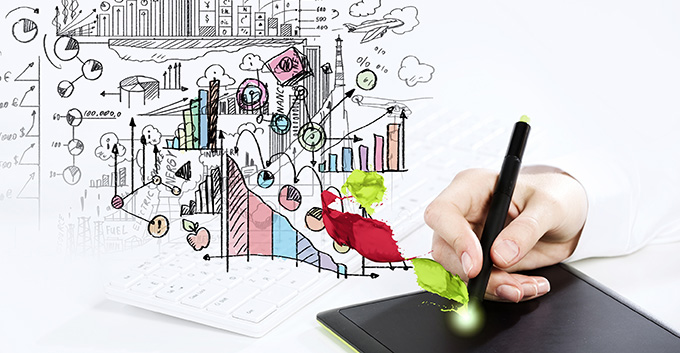
Information Design Defined
The total volume of information in the world is growing exponentially (actually, it’s doubling each year). On top of that, information is more important to marketing and business intelligence than it’s ever been. Because displaying that information in an easy-to-digest data visualization or infographic is so important, it’s crucial to have the right skillset on your visualization team.
All designers handle the challenge of presenting their information in an easy-to-understand format. Their objective is always to engage and enlighten, and often to persuade. However, not all designers are capable of presenting complicated data stories and insights in a way that is:
- Engaging
- Explanatory
- Easily absorbed
- Accurately portrayed
Enter the information designer.
How is an information designer different from a graphic designer?
Let’s start with an analogy: Baseball pitchers and information designers have a lot in common. There are 9 men on the field for a professional baseball team at any given time, and they all have at least one thing in common: They can throw a ball fast and accurately. However, that doesn’t mean they can all pitch. There’s more to pitching than just throwing the ball hard and straight – it’s a specific talent and skillset that must be found and cultivated. The same is true of information designers.
Most professional designers are skilled at using layout, color and other graphical elements to make the presentation of information attractive and readable. But, typical graphic designers tend to be concerned with generating an emotional response only in the viewer.
The information designer, on the other hand, tackles different communications challenges. While an information designer’s final product must be attractive and eye-catching, their true job is to connect intellectually with emotion. That means that an information designer will place a higher priority on accuracy and ease of data consumption within an aesthetically pleasing visual context.
However, engaging graphics are still a key part of their responsibility. Information designers don’t abandon the idea of having a visually compelling end-product – they simply make sure that their presentation decisions reinforce the data instead of obscuring it.
What makes an information designer special?
First and foremost, a good information designer needs to be a good graphic designer. The skillset required to create great data visualizations and infographics includes the same graphic design understanding and training of a traditional designer. As a general rule, an information designer is fully capable of handling the role of a traditional graphic designer. The opposite, however, cannot be said.
A good information designer has additional skills that lend themselves toward understanding and presenting data. For some, these come from a background in mathematics, statistics, or research. For others, it may be business school or management training. Whatever the reason, data speaks to these people and they are able to coherently “speak data” to others.
Put plainly, an information designer will be better equipped to understand the story within your data and then tell it with a data visualization. That means they can:
- Create the project more efficiently
- Notice discrepancies or other issues with the data set
- Offer insight into better ways to reach your objectives
- Work directly with analysts to find additional data points
Sharing the tremendous amount of data you have is a challenge. Build your data visualization team with an information designer at its core, and you have an advantage that leads directly to an amazing final product.
If you feel you’re not getting full value from your organization’s available information, Boost Labs can help you unlock the business potential of your information through visual content marketing strategies and practical information design.
